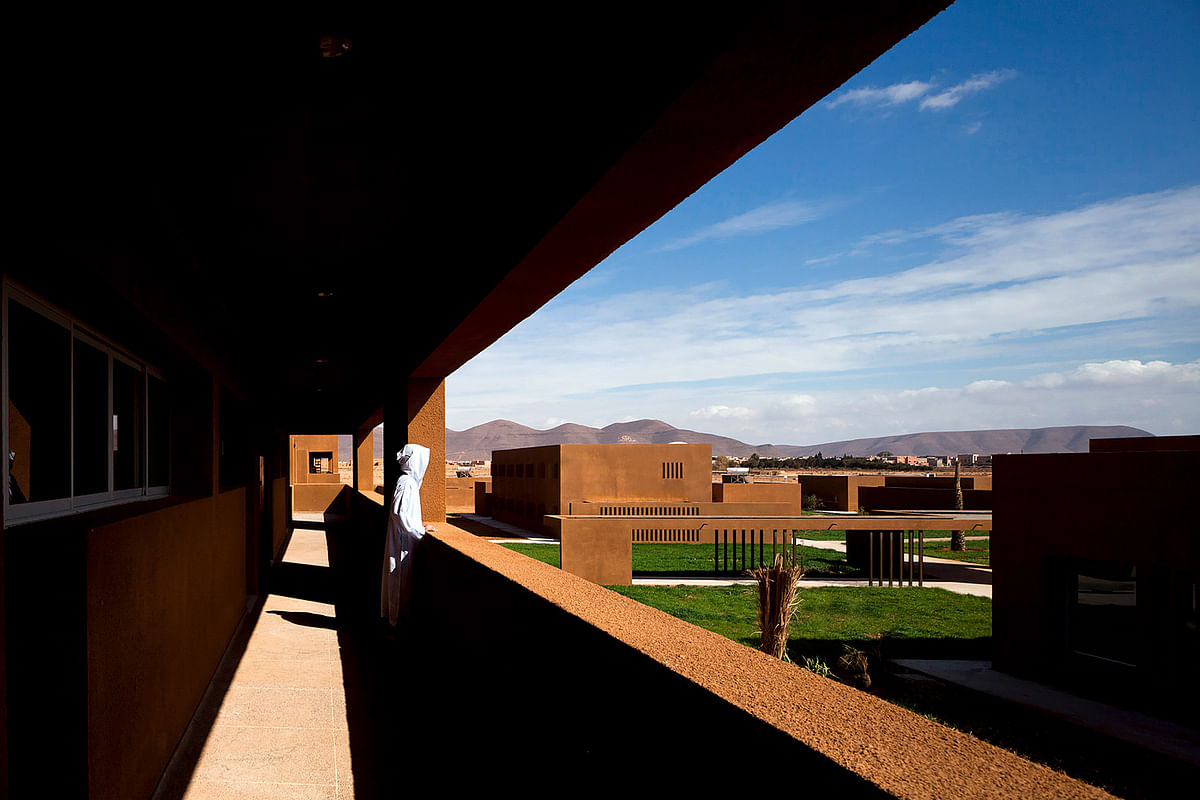
19 shortlisted projects to compete for 2016 Aga Khan Award for Architecture
By Justine Testado|
Tuesday, May 10, 2016
Related
Established in 1977, the esteemed Aga Khan Award for Architecture is bestowed every three years to projects whose design concepts best represent and have successfully created positive impact for its surrounding communities. The prize attracts projects from around the globe that range from contemporary design, social housing, community improvement and development, historic preservation, reuse, and conservation, as well as landscape design and improvement of the environment.
With the 13th cycle well underway, 19 projects in 14 countries have been shortlisted and will go head to head for a shot at the US$1 million cash prize. The 2016 Master Jury evaluated 348 nominated projects before coming up with the official shortlist.
The shortlisted projects will be broadcast in several languages on TV 5 Monde, and the winning announcement and award ceremony is scheduled for this fall.
Have a look at the projects below.
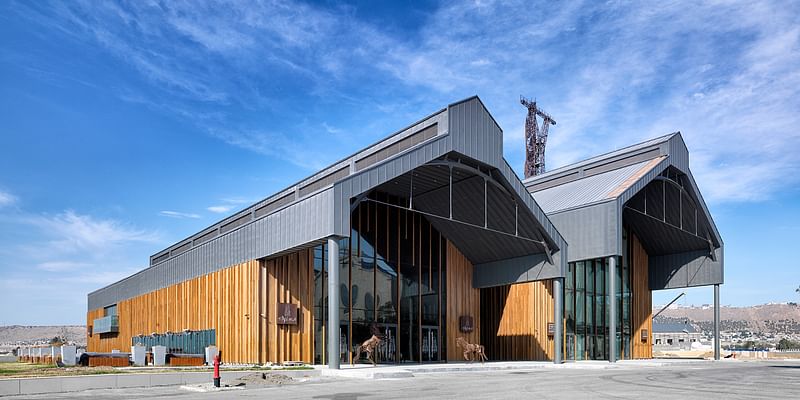
New Power Station | Baku, Azerbaijan
“The original brief asked the architects to demolish the old, late-19th century power station located on a natural harbour in the Bay of Baku, and build a new events hall in its place, but after a site visit, the architects proposed two new buildings linked by an enclosed bridge to house event spaces, while preserving the old power station as an exhibition space. The resulting New Power Station references the old through its placement and form, and the courtyard outside connects the former industrial site to its surroundings, the expanding green zone on the city’s waterfront.” More project info.

Bait Ur Rouf Mosque | Dhaka, Bangladesh
“After a difficult life and the loss of her husband and near relatives, the client donated a part of her land for a mosque to be built. A temporary structure was erected. After her death, her grand-daughter, an architect, acted on her behalf as fundraiser, designer, client and builder to bring the project to completion. In an increasingly dense neighbourhood of Dhaka, the Mosque was raised on a plinth on a site axis creating a 13-degree angle with the qibla direction, which called for innovation in the layout. A cylindrical volume was inserted into a square, facilitating a rotation of the prayer hall, and forming light courts on four sides. The hall is a space raised on eight peripheral columns.” More project info.
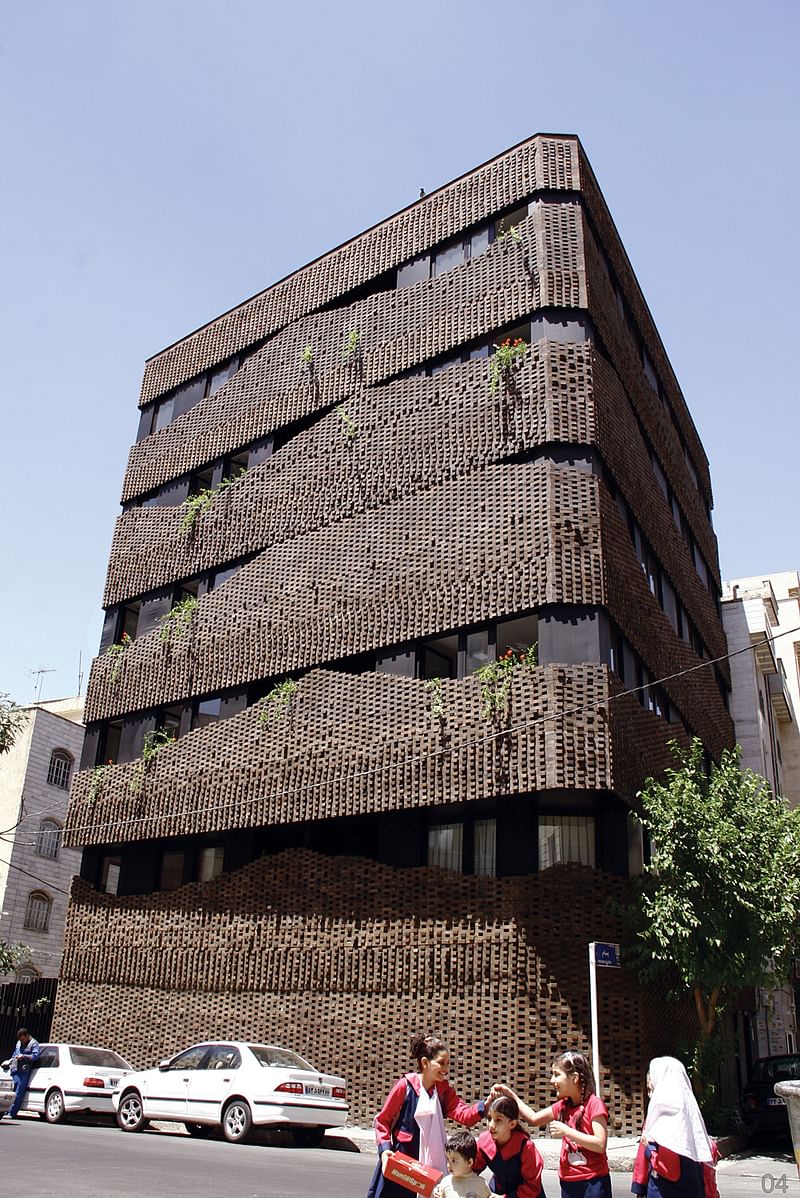
40 Knots House | Tehran, Iran
“Persian carpets are world renowned, and bricks have a strong relationship with Iranian historical architecture. Here they are fused into a contemporary facade that appears as a collection of intricately interwoven modules. Creating a small and low budget apartment building in Tehran does not leave much space for creativity, yet an architect can try to do something with the material, textures, outer envelope and light. In light of that, a modern interpretation of the ancient mashrabiyya was conceived by using the bricks available on the local market. In order to reduce costs in the construction of this five-storey building, unskilled workers, unable to read technical drawings, were employed instead of master craftsmen.” More project info.
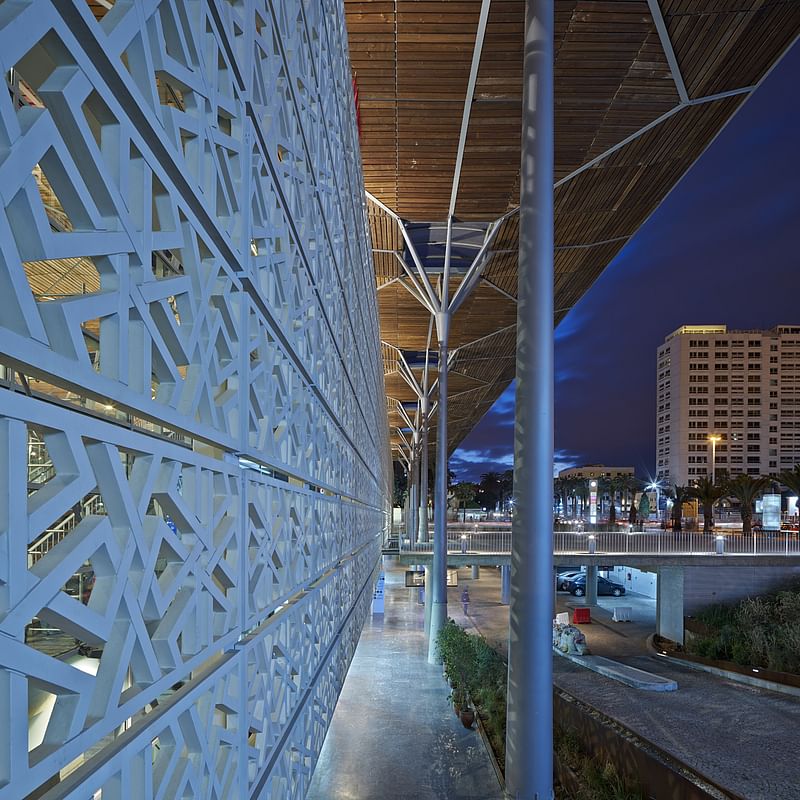
Casa-Port New Railway Station | Casablanca, Morocco
“This transport hub, designed to anticipate 25 million passenger trips per year in the future, comprises a large passenger hall opening onto a wide square to the southwest and the platforms to the southeast, a shopping centre located on the lower level of the hall, an underground car park and an office building...In its spaces, volumes, materials, lighting and geometry, the station carries on the heritage of Moroccan palaces and public buildings, while paying tribute to the modernity of Casablanca.” More project info.

Bunateka Libraries | Various locations, Kosovo
“Bunateka is a word play from the Albanian words biblioteka, or library, and bunar, meaning well or source of water. The architect, living in Kosovo until the age of 12, grew up and was educated in Switzerland, Nearly 17 years later, as he returned to his home town of Lutogllavë, he saw nothing had changed; there was no library and there were no books. So the idea for the Bunateka emerged from the aspiration to establish libraries in Kosovo’s rural areas in order to provide disadvantaged youth with opportunities to access books and educational materials.” More project info.
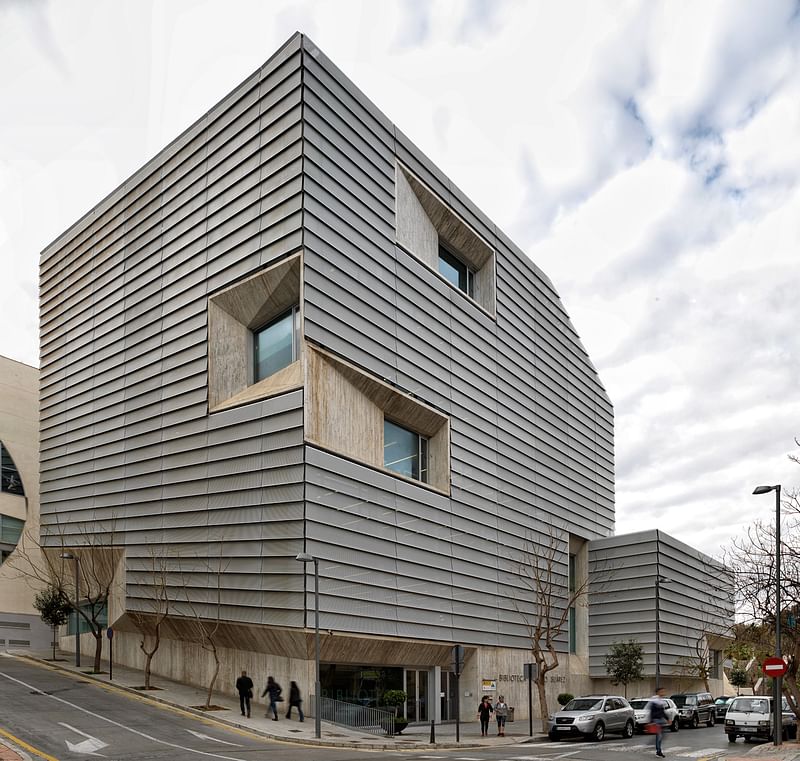
Ceuta Public Library | Ceuta, Spain
“An original 14th century Marinid archaeological area is at the core of the reading spaces of the Library. The excavations were included in the interior space of the public building, and the architects worked with the supervising archaeologist to creating a sense of openness and transparency between the Library and the Marinid centre. The project programme is organised vertically on seven levels, three of them overlooking the archaeological remains. The building consists of many different components and the architects wanted to give it a sense of uniformity, to cover it all with one unifying surface. So they developed the idea of a ‘veil’ (a perforated screen) in order to link it all together.” More project info.
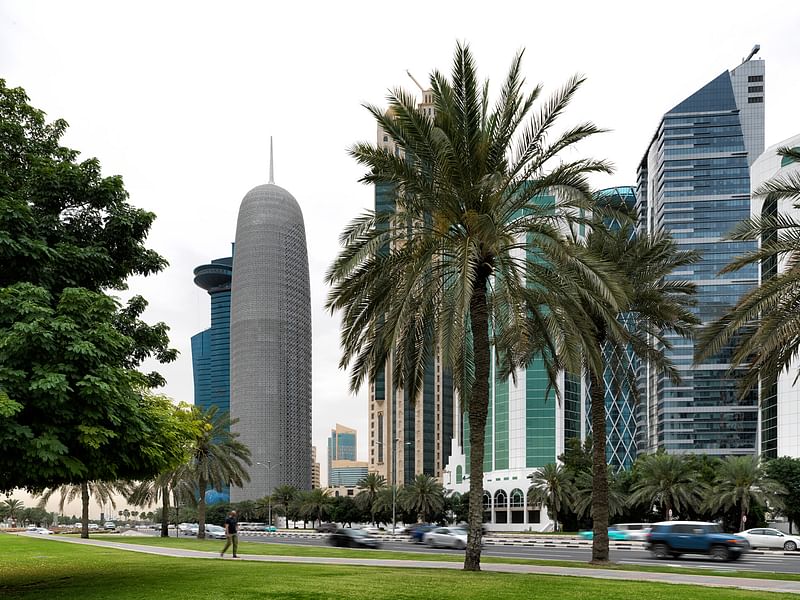
Doha Tower | Doha, Qatar
“Sheikh Saud bin Mohammad Al Thani had met Jean Nouvel on the occasion of the retrospective exhibition of the work of the architect at the Centre Pompidou in 2002 and invited him to design a tower to fit into the vision for the development of Doha. The Tower is a cylindrical volume that measures 45 metres in diameter. The steel and concrete structure follows a diamond-shaped grid that bends along the virtual surface of the cylinder. The facade uses a double-skin system. The unique exterior skin is composed of four ‘butterfly’ aluminium elements of different scales and evokes the complexity of the mashrabiyya, while serving as protection from the sun.” More project info.
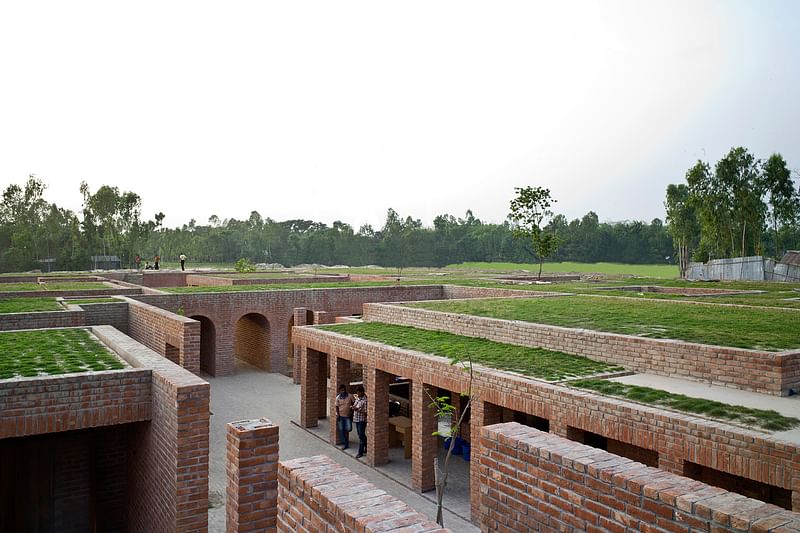
Friendship Centre | Gaibandha, Bangladesh
“The Centre was created to train staff of an NGO working with people inhabiting nearby chars, or riverine islands. Offices, a library, meeting rooms, and prayer and tea rooms are included in pavilion-like buildings surrounded by courts and pools. The Centre is also rented out for meetings, training, and conferences for income generation. The local hand-made brick construction has been inspired by the monastic aesthetic of the 3rd century BC ruins of Mahasthangahr, the earliest urban archaeological site yet found in Bangladesh.” More project info.

RELATED NEWS 2013 Aga Khan Award for Architecture winners announced
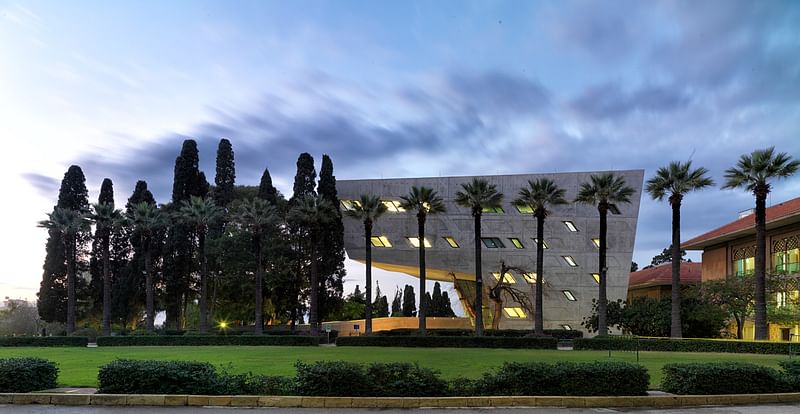
Issam Fares Institute for Public Policy and International Affairs | Beirut, Lebanon
“The American University of Beirut (AUB) held an invited competition for the design of a structure to accommodate a modern-day think tank on its lush middle campus, one that was in harmony with the rest of the university, especially mindful of the surrounding greenery, and to preserve, as far as possible, existing sightlines to the Mediterranean. The building had to fit into another stage in the implementation of a master plan for AUB, whose upper campus overlooks the water, and whose lower campus is located on the seafront. The architect responded to the project brief by producing a design that significantly reduces the building's footprint by "floating" a reading room, a workshop conference room and research spaces above the entrance courtyard in the form of a 21-metre-long cantilever in order to preserve the existing landscape.” More project info.

Makoko Floating School | Lagos, Nigeria
“Some 80,000 people reside in Makoko, in a stilt settlement south of Lagos, built over water, served by only one English-speaking primary school on reclaimed land susceptible to flooding. The Floating School is a prototype structure whose main aim is to generate an alternative building system and urban culture for the populations of Africa’s coastal regions. The triangular A-frame or pyramid (10m high with a 10m x 10m base), built from locally sourced wood and bamboo and buoyed by recycled plastic barrels, is an ideal shape for tall floating objects on water. The structure has three levels: an open play area and community space; an enclosed space for two classrooms for 60 pupils, connected by stairs to the play area; and a semi-enclosed workshop space on a third level.” More project info.

Manouchehri House | Kashan, Iran
“A boutique hotel and textile centre located in the historic quarter of Kashan, in the province of Isfahan, the project entailed the restoration of a 19th century merchant home, typical of the historic residential buildings of the area which have for the most part fallen into complete disrepair...It houses not only the textile workshops for brocade, silk, cotton and velvet weaving, but also features the city’s finest dining establishment, a contemporary art gallery, a handicraft shop, and a subterranean movie house adapted from the original cistern of the old structure The project has met with so much success that it has...triggered many similar initiatives across the city.” More project info.

Micro Yuan'er | Beijing, China
“Cha'er Hutong is a quiet spot one kilometre from Tiananmen Square in the city centre. Number 8 in this neighbourhood, located near a major mosque, is a typical da-za-yuan (big-messy-courtyard) once occupied by over a dozen families. The courtyard is about 300-400 years old and once housed a temple that was then turned into residences in the 1950s. Over the past fifty or sixty years, each family built a small add-on kitchen in the courtyard. Almost all of them have been wiped out with the renovation practices of the past years. In redesigning, renovating and reusing the informal add-on structures instead of eliminating them, it was intended to recognise them as an important historical layer and as a critical embodiment of Beijing’s contemporary civil life in Hutongs that has so often been neglected.” More project info.

Nasrid Tower Restoration | Almeria, Spain
“The project explores the dichotomy between the solid, ageless construction of the existing 13th century Nasrid Tower, made by anonymous craftsmen, and the provisional, light, degradable nature of the contemporary. The additions to the original building are conceived as future ruins, removable, temporary objects placed directly onto the ground without foundations and made with contrasting materials. The restoration of the Tower itself involved the preservation of original materials where possible, removing modern additions and resurfacing the original mud wall and interior brick fabric.” More project info.
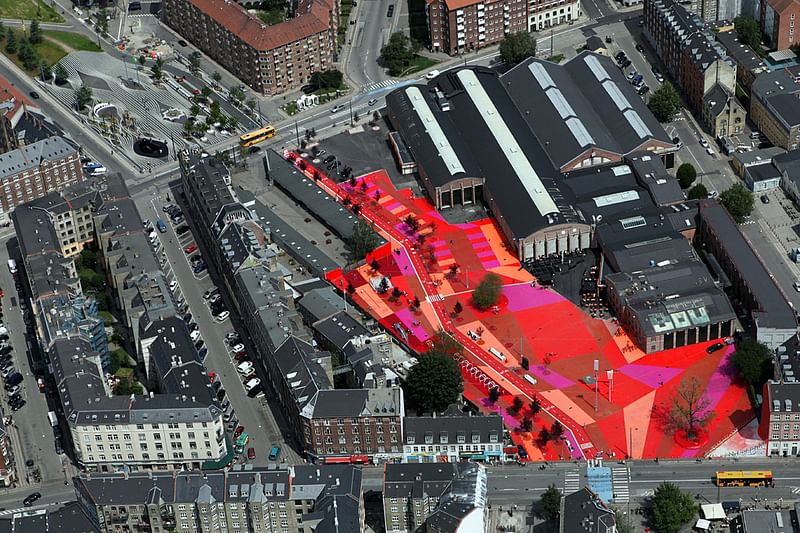
Superkilen | Copenhagen, Denmark
“A meeting place for residents of Denmark’s most ethnically diverse neighbourhood and an attraction for the rest of the city, this project was approached as a giant exhibition of global urban best practice. In the spring of 2006 the street outside the architects’ Copenhagen office erupted in vandalism and violence. Having just gone through the design of a Danish mosque in downtown Copenhagen, BIG chose to focus on those initiatives and activities in urban spaces that work as promoters for integration across ethnicity, religion, culture and languages. Taking their point of departure as Superkilen’s location in the heart of outer Nørrebro district, the architects decided they would approach the project as an exercise in extreme public participation.” More project info.

Royal Academy for Nature Conservation | Ajloun, Jordan
“The project for an Academy was originally proposed to be on a site inside a nature conservancy reserve, but the architect convinced the client to use an adjacent abandoned quarry which is outside the reserve. The basic philosophy was that the building would use the parts of nature which have been injured in the past, instead of adding a new intervention on virgin land. Encompassing an academy that provides educational programmes on environment and features a high-end restaurant and craft, the Academy follows a quarry cliff cut-line, creating a linear addition of constructed stone to the bedrock.” More project info.

King Fahad National Library | Riyadh, Saudi Arabia
“The cuboid shape of the new building surrounds the old 1980s library building on all sides, thus giving the National Library a new appearance in the cityscape. It is clad by lozenge-shaped textile awnings, which playfully combine revelation and concealment. White membranes, supported by a three-dimensional, tensile-stressed steel cable structure, act as sunshades and reinterpret the Arabian tent structure tradition in a low-energy way.” More project info.

Thread: Artist Residency and Cultural Centre | Sinthian, Senegal
“Thread is a socio-cultural centre that houses two artists’ dwellings and studio space for local and international artists. Nicolas Weber, of the Josef and Anni Albers Foundation, had been supporting the efforts of a Senegalese doctor, Magueye Ba, in running a medical center and elementary school program serving an isolated network of rural villages in the Tambacounda region. When Ba and Weber wanted to add elements of cultural exchange and support for the arts to the work in Tambacounda, the project of creating an artist residency and cultural centre formally began under the pro-bono stewardship of Toshiko Mori, who had previously held workshops in the area. It is a hub for Sinthian and surrounding villages, providing agricultural training on the area’s fertile land and a meeting place for social organization which is, in rural Senegal, the crucial mechanism for sustainable development.” More project info.
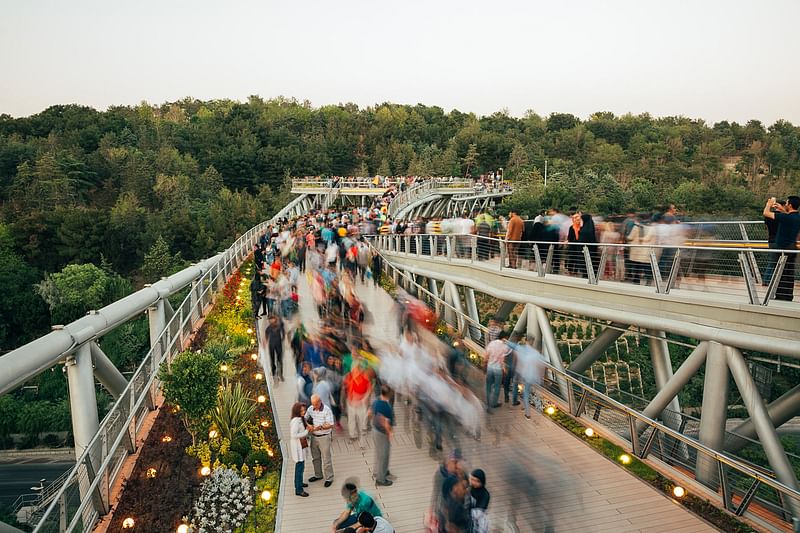
Tabiat Pedestrian Bridge | Tehran, Iran
“The architects first conceived the two-to-three level, 270-metre-long curved pedestrian bridge of varying width, a complex steel structure featuring a dynamic three-dimensional truss with two continuous deck levels that sits on three tree shape columns, with a third where the truss meets the column branches...The structural elements are based on a latent geometrical order rotated and repeated in three dimensions. The result is a spatial structure large enough to create an inhabitable architectural space, where people congregate, eat and rest rather than just pass through. ” More project info.
(cover image) Guelmim School of Technology | Guelmim, Morocco
Project excerpt: “Situated in Guelmim, 200 kilometers south of Agadir and known as the “door of the Sahara”, the School was conceived in line with a policy of decentralization and making education more accessible to those living in remote areas. Comprising a 250-seat lecture hall, classrooms, laboratories, study rooms, library, offices, sports grounds and staff accommodation, the campus is connected by a series of canopies that create sheltered walkways and seating areas along the north/south axis dividing the campus into two. This organization makes for readability and clarity of the various elements of the project, while preserving the diversity of the program.” More project info.


Share
0 Comments
Comment as :